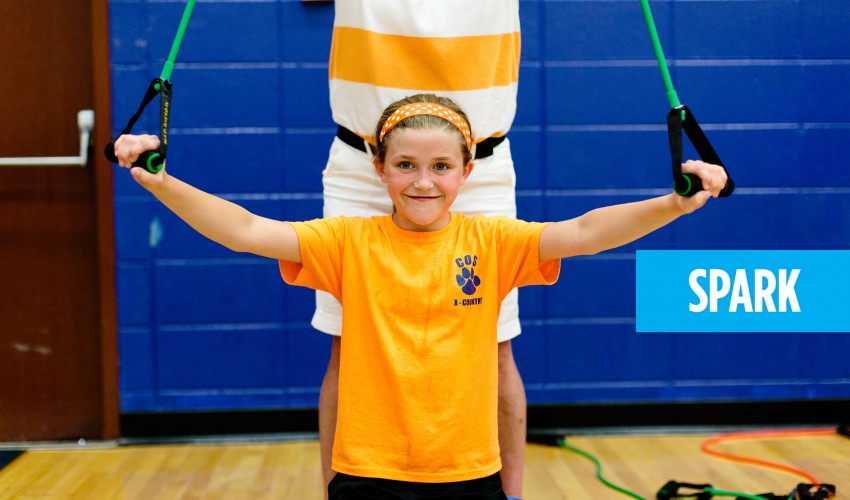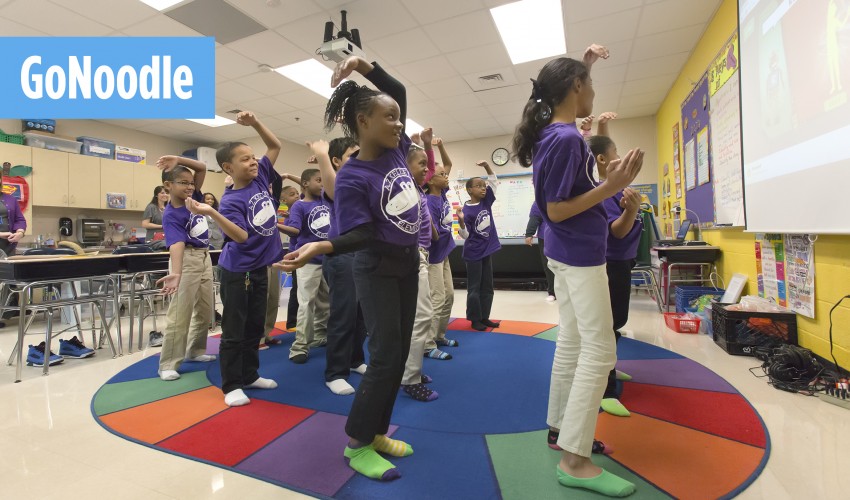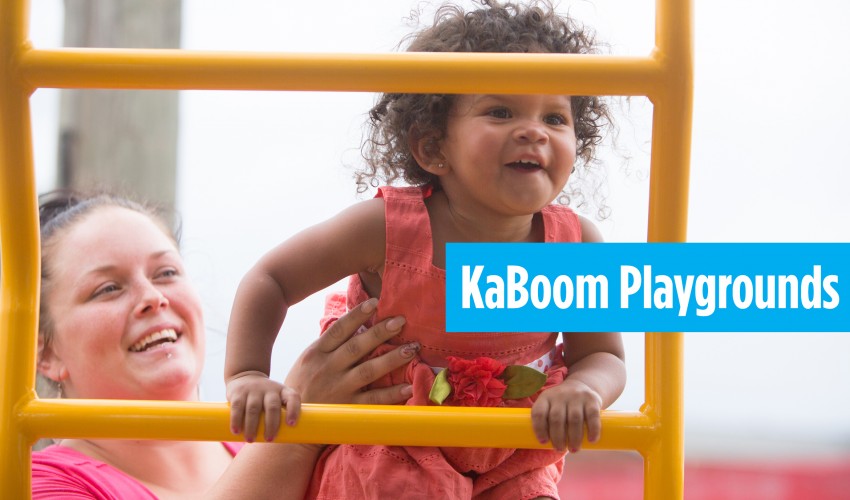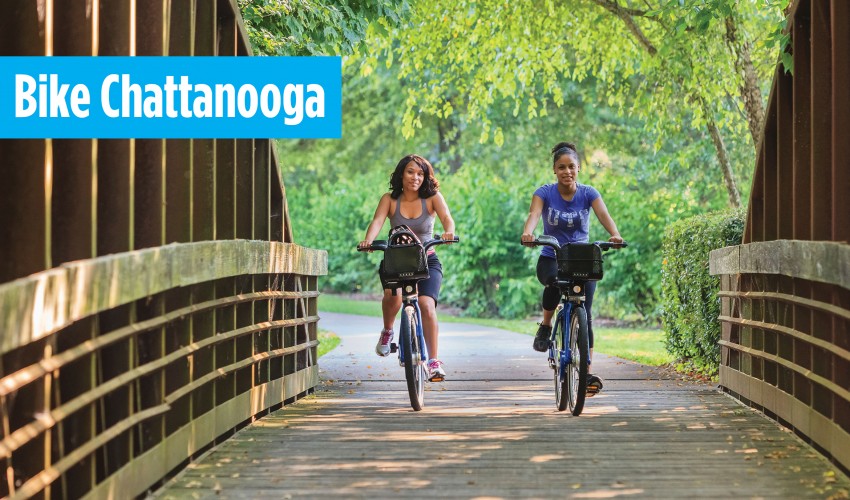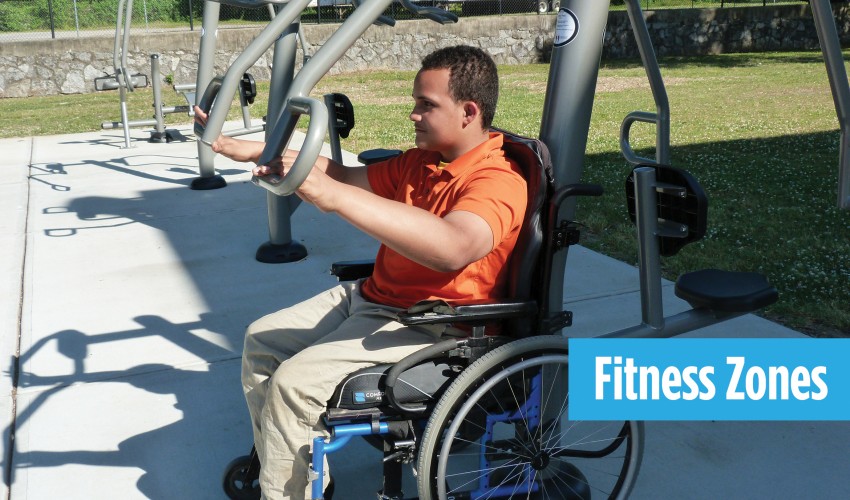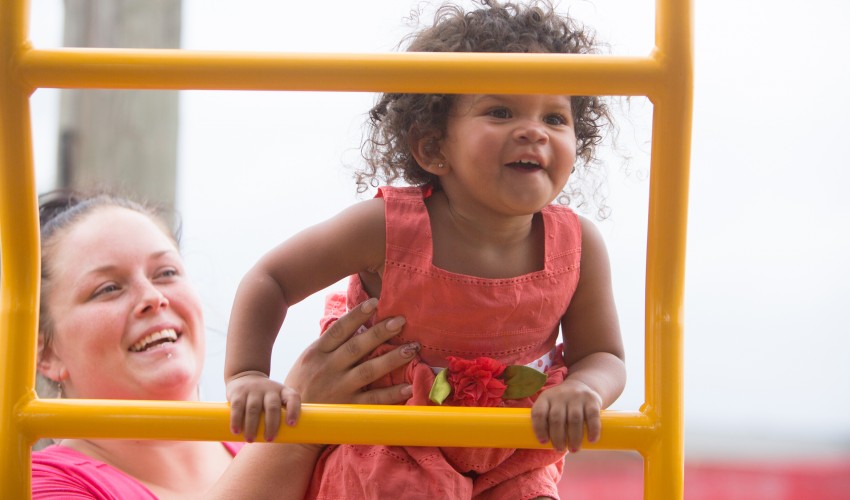Human beings are built to be active.
But a mix of factors, including culture, geography and technology, mean not enough Tennesseans are moving as much as they should.
A national study shows that Tennessee ranks next to last in the nation, just above Mississippi, when it comes to being physically active. Four out of 10 adults report that they lead completely sedentary lives.Only 13 percent meet recommended weekly physical activity levels.
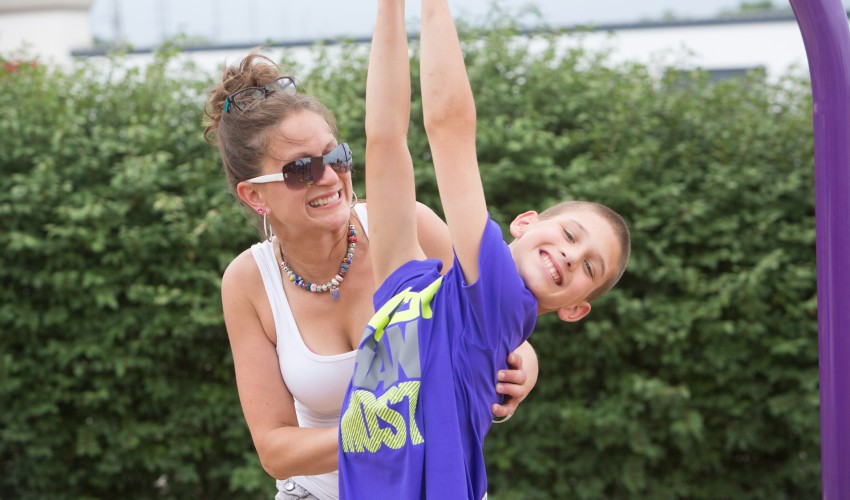
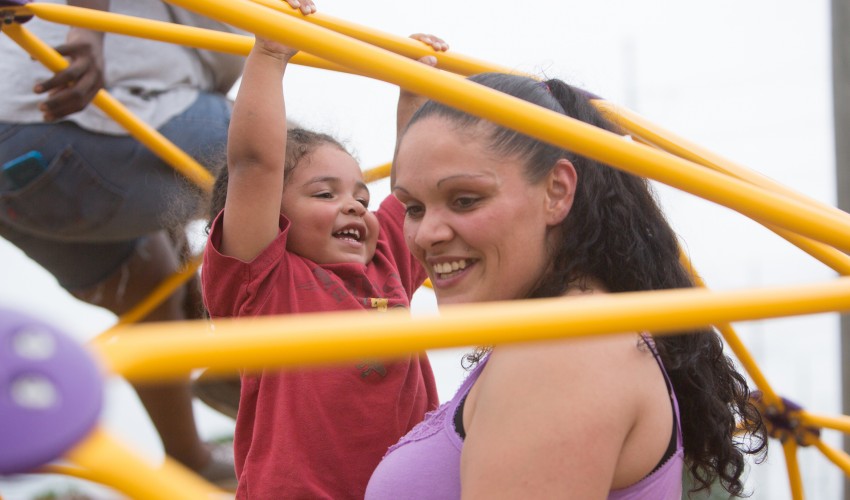
KaBoom playgrounds give kids a safe place to play.
That has a negative effect on overall health — where Tennessee also ranks among the bottom 10 states.
“There are some pretty understandable reasons for the lack of activity,” says Rick Johnson, director of the Governor’s Foundation for Health and Wellness.
“When we see what makes up modern life, being active is not always the easy choice or the common choice. Where and how we work, and how we spend our time when not at work, all contribute to people being less active now than they were 20 or 25 years ago.”
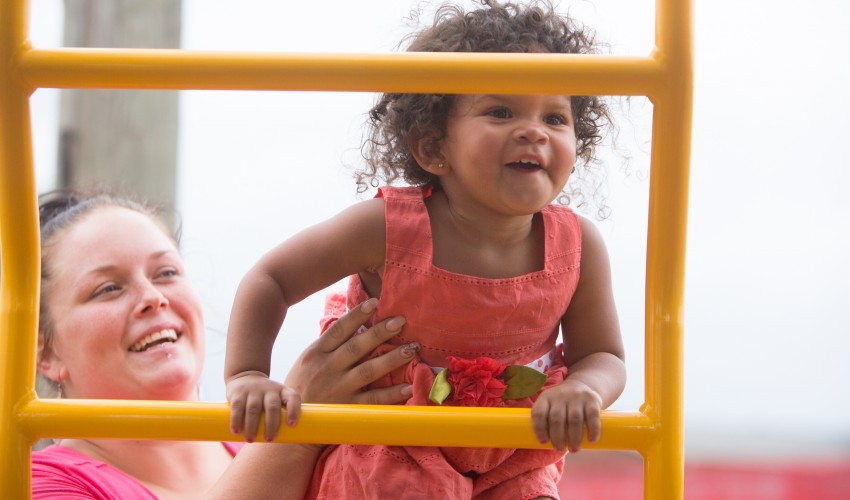
KaBoom playgrounds give kids exercise and key bonding time with parents.
Cars, geography and technology
Driving is just another way of sitting, and Tennesseans spend a lot of time in cars.
Most communities are rural or suburban and even the larger cities sprawl outward, with a good portion of residential neighborhoods set away from the heart of town.
People depend on automobiles to get to work, to shop, to go to doctor’s appointments and to take care of all that needs to get done in their daily lives.
Today, only 1.5 percent of Tennesseans walk or bike to work.
Work itself requires less actual movement.
Once, the majority of residents lived on farms and spent long days doing physical labor. With the move to an industrial economy, people took factory jobs, but those still required lifting and movement. Today’s service economy means a typical workday consists of sitting in front of a computer or operating labor-saving machinery.
Even everyday tasks that once required some physical exertion have been automated out of existence — we take elevators, use power lawn mowers, and shop online. And while that makes life easier in many ways, it has profound health consequences.
Activity lowers blood pressure, improves sleep, reduces blood sugar, strengthens bones and muscle, reduces the risk of heart disease and some cancers, and reduces senior citizens’ risk of falling.
“Human beings are built to be active in order to burn calories, build muscle strength, and improve metabolism. Increasing physical activity, even incrementally, by getting up during the workday and walking the perimeter of the office, stretching and moving a bit every hour — that alone makes a difference to overall health,” says Johnson.
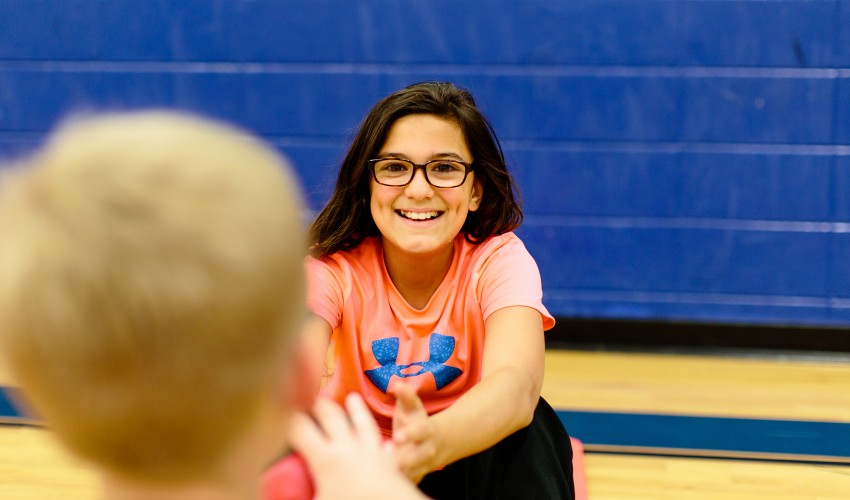
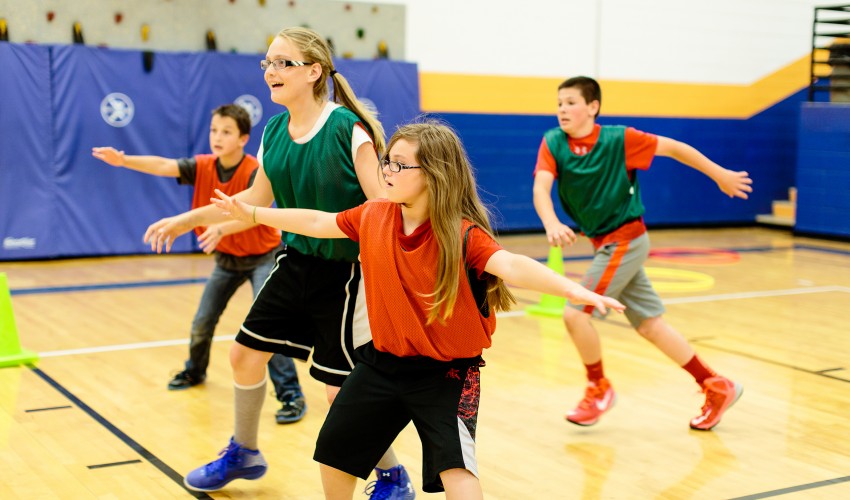
SPARK gets children moving with sports, play & active recreation for kids.
But these days the idea of regular exercise has become synonymous with body consciousness and athleticism.
People who carve out time to exercise are categorized as gym rats who want six-pack abs, or marathon runners determined to set a personal record.
Helping non-exercisers embrace the idea of adding movement to their day means changing that perception and making activity easy, accessible and enjoyable.
“There’s nothing negative about an exercise regimen, but many people are not going to begin getting active that way. It’s important that people don’t go on a guilt trip or feel that they are seen as lazy or unconcerned about their health if they aren’t active,” says Johnson.
“We need to recognize our state’s poor ranking, but we then need to focus on finding ways to get people more physically active.”
Fortunately, a number of creative programs are in place throughout Tennessee to meet that challenge.
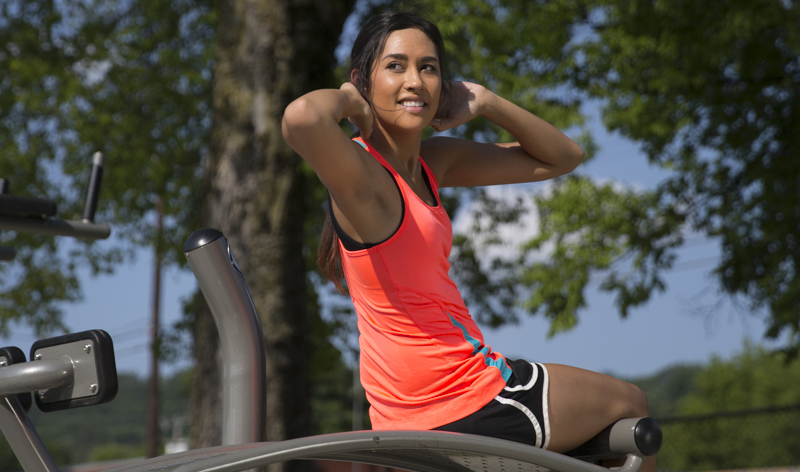
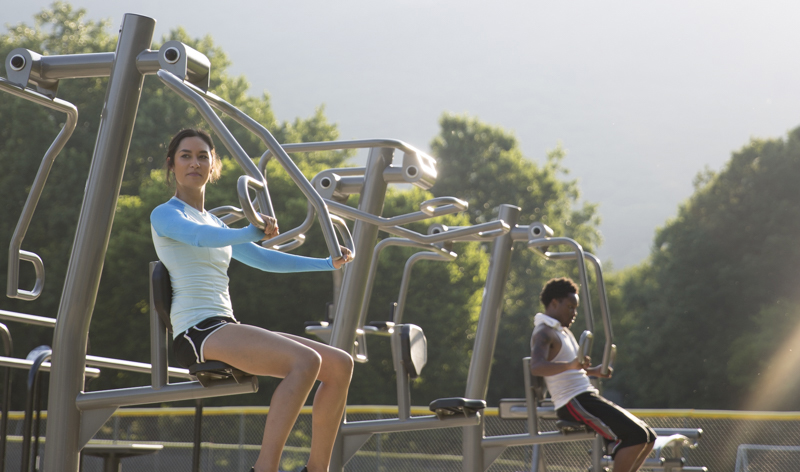
Fitness Zones are outdoor exercise areas that give anyone free access to gym-style workout equipment
Adding to the curriculum
Connie Givens, a school nurse in Upper East Tennessee, saw far too many students who were overweight, eating poorly, and getting very little exercise. Her efforts to change that led to the founding of Coordinated School Health (CSH) in 2000.
It eventually went statewide, so that activity, nutrition and healthy habits are ingrained into every school system. A full-time physical activity specialist is on board to work with PE teachers and be a resource for all schools in the state.
Tennessee schools are now required to provide 90 minutes per week of physical activity for students K-12.
“We all know that healthy students are better learners,” says Lori Paisley, director of CSH.
“Physical activity helps with cognition and attention and behavior. It gets the blood flowing, gets the metabolism up, and helps kids concentrate in the classroom.”
Here’s the dilemma, though: All grades must meet rising academic standards, measured with standardized testing.
Physical activity gives students a valuable break in studies that energizes them and allows greater focus for classroom work. But it’s tough to carve out enough time to get all kids moving and also cover lessons.
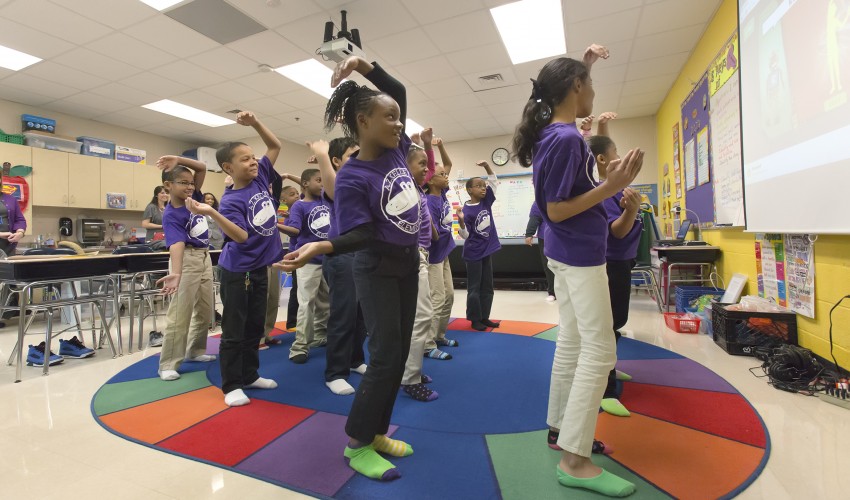
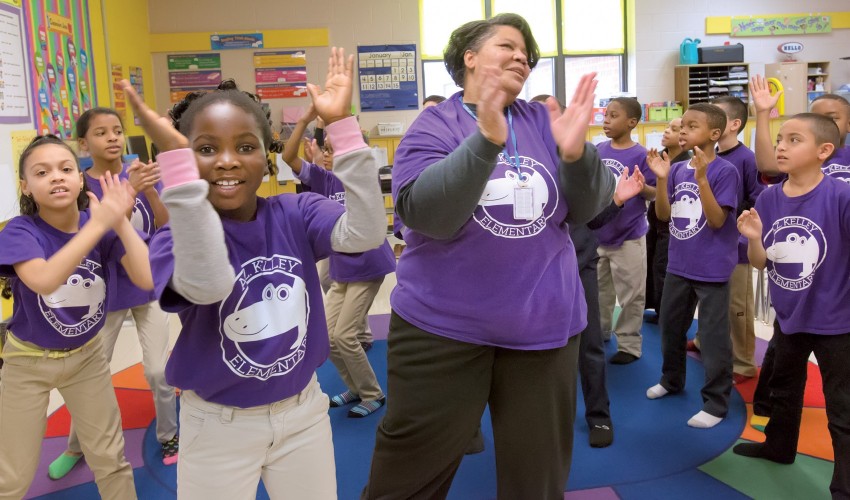
GoNoodle in-class exercise gets kids' bodies and minds moving.
The creators of GoNoodle solve that dilemma for younger students. Elementary school teachers use the online tool to play short, interactive videos for their classes that bring movement into the learning environment.
A five-minute game of “Body Spell” gets kids out of their seats for a spelling session that has them forming letters with their body.
Dancing around with Koo Koo Kanga Roo dissipates excess energy and cuts down disruptive fidgeting. There are more than 100 different games that give the class much needed activity breaks.
“Students love GoNoodle,” says Paisley. “Teachers have an appropriate activity that doesn’t require a lot of preparation on their part. It’s available to any school in the state that wants to use it and we’ve seen great success with it.”
Encouraging participation
As kids get older, the challenges change.
In middle school, smartphones, video games, movies and just “hanging out” take the place of playground fun.The athletically inclined might join sports leagues or school teams, but anyone who ever hung back in gym class, halfheartedly loping down the basketball court or making sure to play far outfield in softball, knows that non-athletic students often choose to sidestep real participation.
And during physical education activities that divide the class into two teams, even the most enthusiastic players don’t get much playing time as they wait for everyone to take a turn.
SPARK, used in middle schools as part of the Shape the State initiative, was designed to upend traditional physical education class structures to encourage wider participation. Schools that implement the program get lesson plans, equipment and training for teachers.
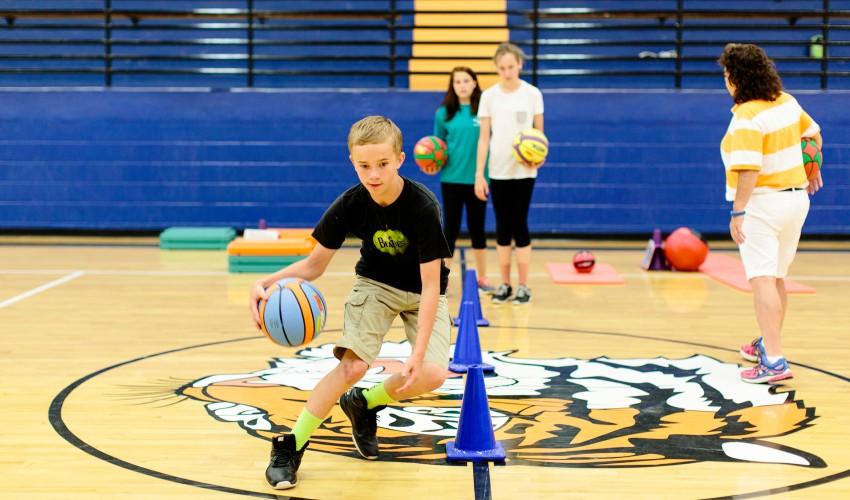
“With SPARK, we use a lot of partner and small-group activities. Instead of full-court basketball with two teams, we split up into 3-on-3 basketball so everybody in class is moving and active and part of the game,” says Cindy Miniard, physical education teacher at Crab Orchard Elementary School in Cumberland County.
“I’ve seen kids who had always been timid in a large game or group activity start to shine and see their own potential as they have a chance to handle the ball and play more.”
With that confidence in place, those students are more willing to try new activities, and often bring what they learned home, enlisting neighborhood friends or siblings to join them in a game of ultimate Frisbee or take turns with a hula hoop.
And that’s the ultimate goal of SPARK — get kids to enjoy physical activities so that they will seek them out beyond school requirements.
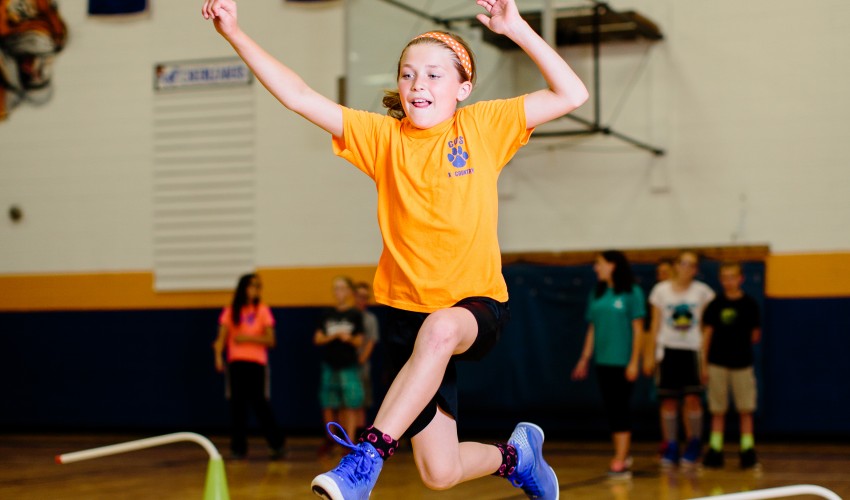
Changing the dynamic
While students have schools setting aside time for activity, adults are on their own.
A little nudge helps, so many Tennessee communities do just that.
- Fitness Zones in Chattanooga, free to the public, offer open-air workout space and equipment.
- Bike Chattanooga has stations throughout the city with bikes for rent at minimal cost.
- Nashville’s Walk 100 Miles with the Mayor invited residents to log 100 miles in three weeks, with the intention to jump-start a regular exercise routine.
- RiverFit in Memphis turned a public park into a wonderland of sports fields and fitness stations.
“Having people in leadership positions understand how critical it is to address this issue — and how much it hurts and costs us to have a population that is not healthy due to preventable behavior — will make a difference,” says Johnson.
Throughout the state, organizations, local governments, corporations and churches have heard that message. People of all ages are listening, and there has been progress.
Since 2007, the obesity rate among Tennessee students has declined by 6.3 percent.
A recent study showed that residents know that exercising regularly will improve their health, and 73 percent said they were thinking about exercising more.
The will to change is there and, with encouragement, more people are bound to take that first step.
“The problem is bigger than people think,” says Johnson. “But the solution is not as hard as most imagine.”
Learn more:
